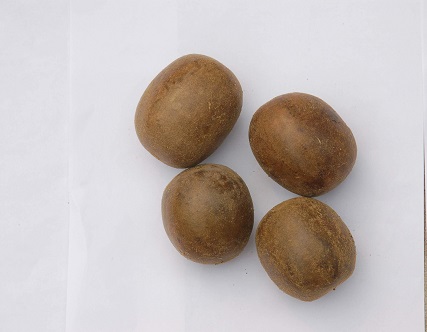Luo Han Guo

Siraitia grosvenorii is a herbaceous
perennial vine of the Cucurbitaceae (gourd) family, native to southern China
and northern Thailand. The plant is cultivated for its fruit, whose extract is
nearly 300 times sweeter than sugar and has been used in China as a natural
low-calorie sweetener for cooling drinks, and in traditional Chinese medicine
to treat diabetes and obesity.
The plant"s fruit is often called in
English language publications luo han guoor lo han kuo (from the Chinese luóhàn
guǒ, 罗汉果/ 羅漢果). It may also be called la han qua (from Vietnamese la hán quả),
arhat fruit, Buddha fruit, monk fruit, or longevity fruit (although this name
has been used for several other fruits).
The scientific species name honors Gilbert
Grosvenor who as president of the National Geographic Society helped to fund an
expedition in the 1930s to find the living plant where it was being cultivated.
The vine attains a length of 3 to 5 m,
climbing over other plants by means of tendrils which twine around anything
they touch. The narrow, heart-shaped leaves are 10–20 cm long. The fruit is
round, 5–7 cm in diameter, smooth, yellow-brownish or green-brownish in colour,
containing striations from the fruit stem end of the furrows with a hard but
thin skin covered by fine hairs. The inside of the fruit contains an edible
pulp, which, when dried, forms a thin, light brown, brittle shell about 1 mm in
thickness. The seeds are elongated and almost spherical.
The fruit is sometimes mistaken for the
unrelated purple mangosteen.
The interior fruit is eaten fresh, and the
bitter rind is used to make tea.
The monk fruit is notable for its
sweetness, which can be concentrated from its juice. The fruit contains 25 to
38% of various carbohydrates, mainly fructose and glucose. The sweetness of the
fruit is increased by the mogrosides, a group of triterpene glycosides
(saponins). The five different mogrosides are numbered from I to V; the main
component is mogroside V, which is also known as esgoside.The fruit also
contains vitamin C.
Germination of seeds is slow and may take
several months. It is grown primarily in the far southern Chinese province of
Guangxi (mostly in the mountains near Guilin), as well as in Guangdong,
Guizhou, Hunan, and Jiangxi provinces. These mountains lend the plants shade
and often are surrounded by mists which protect the plants from the sun.
Nonetheless, the climate in this southern province is warm. The plant is rarely
found in the wild, so it has been cultivated for hundreds of years.